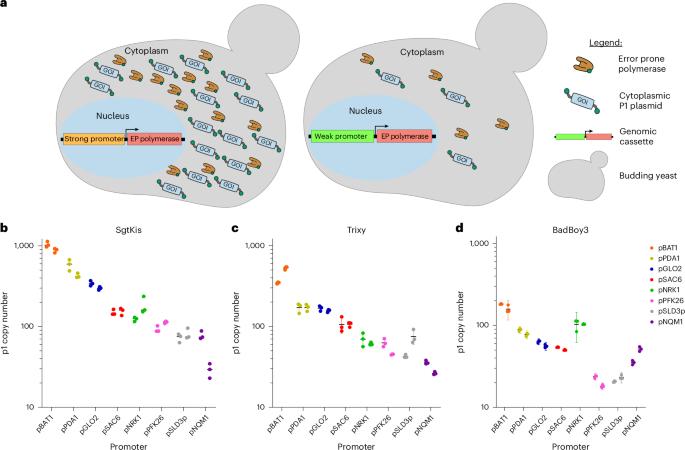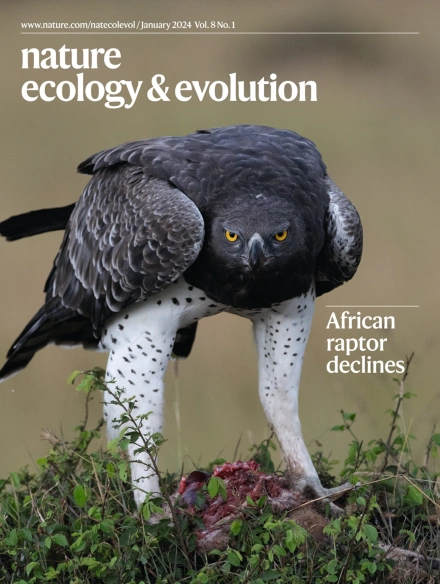The role of plasmid copy number and mutation rate in evolutionary outcomes
IF 13.9
1区 生物学
Q1 ECOLOGY
引用次数: 0
Abstract
Multicopy plasmids are widespread in nature and compose a common strategy for spreading beneficial traits across microbes. However, the role of plasmids in supporting the evolution of encoded genes remains underexplored due to challenges in experimentally manipulating key parameters such as plasmid copy number and mutation rate. Here we developed a strategy for controlling copy number in the plasmid-based Saccharomyces cerevisiae continuous evolution system, OrthoRep, and used our resulting capabilities to investigate the evolution of a conditionally essential gene under varying copy number and mutation rate conditions. Our results show that low copy number facilitated the faster enrichment of beneficial alleles whereas high copy number promoted robustness through the maintenance of allelic diversity. High copy number also slowed the removal of deleterious mutations and increased the fraction of non-functional alleles that could hitchhike during evolution. This study highlights the nuanced relationships between plasmid copy number, mutation rate and evolutionary outcomes, providing insights into the adaptive dynamics of genes encoded on multicopy plasmids and nominating OrthoRep as a versatile tool for studying plasmid evolution. In an experimental multicopy plasmid evolution system that allows manipulation of mutation rate and copy number, low copy number promoted enrichment of beneficial alleles whereas high copy number maintained allelic diversity.


质粒拷贝数和突变率在进化结果中的作用
多拷贝质粒在自然界中广泛存在,并构成了在微生物中传播有益性状的共同策略。然而,质粒在支持编码基因进化中的作用仍未得到充分探索,因为在实验上操纵质粒拷贝数和突变率等关键参数存在挑战。在此,我们开发了一种控制基于质粒的酿酒酵母连续进化系统(OrthoRep)拷贝数的策略,并利用我们的结果研究了一个条件必需基因在不同拷贝数和突变率条件下的进化。研究结果表明,低拷贝数有利于有益等位基因的快速富集,而高拷贝数通过维持等位基因多样性来促进稳健性。高拷贝数也减缓了有害突变的去除,增加了在进化过程中可能搭便车的非功能性等位基因的比例。该研究强调了质粒拷贝数、突变率和进化结果之间的微妙关系,为多拷贝质粒上编码的基因的适应动力学提供了见解,并将OrthoRep作为研究质粒进化的通用工具。
本文章由计算机程序翻译,如有差异,请以英文原文为准。
求助全文
约1分钟内获得全文
求助全文
来源期刊

Nature ecology & evolution
Agricultural and Biological Sciences-Ecology, Evolution, Behavior and Systematics
CiteScore
22.20
自引率
2.40%
发文量
282
期刊介绍:
Nature Ecology & Evolution is interested in the full spectrum of ecological and evolutionary biology, encompassing approaches at the molecular, organismal, population, community and ecosystem levels, as well as relevant parts of the social sciences. Nature Ecology & Evolution provides a place where all researchers and policymakers interested in all aspects of life's diversity can come together to learn about the most accomplished and significant advances in the field and to discuss topical issues. An online-only monthly journal, our broad scope ensures that the research published reaches the widest possible audience of scientists.
 求助内容:
求助内容: 应助结果提醒方式:
应助结果提醒方式:


